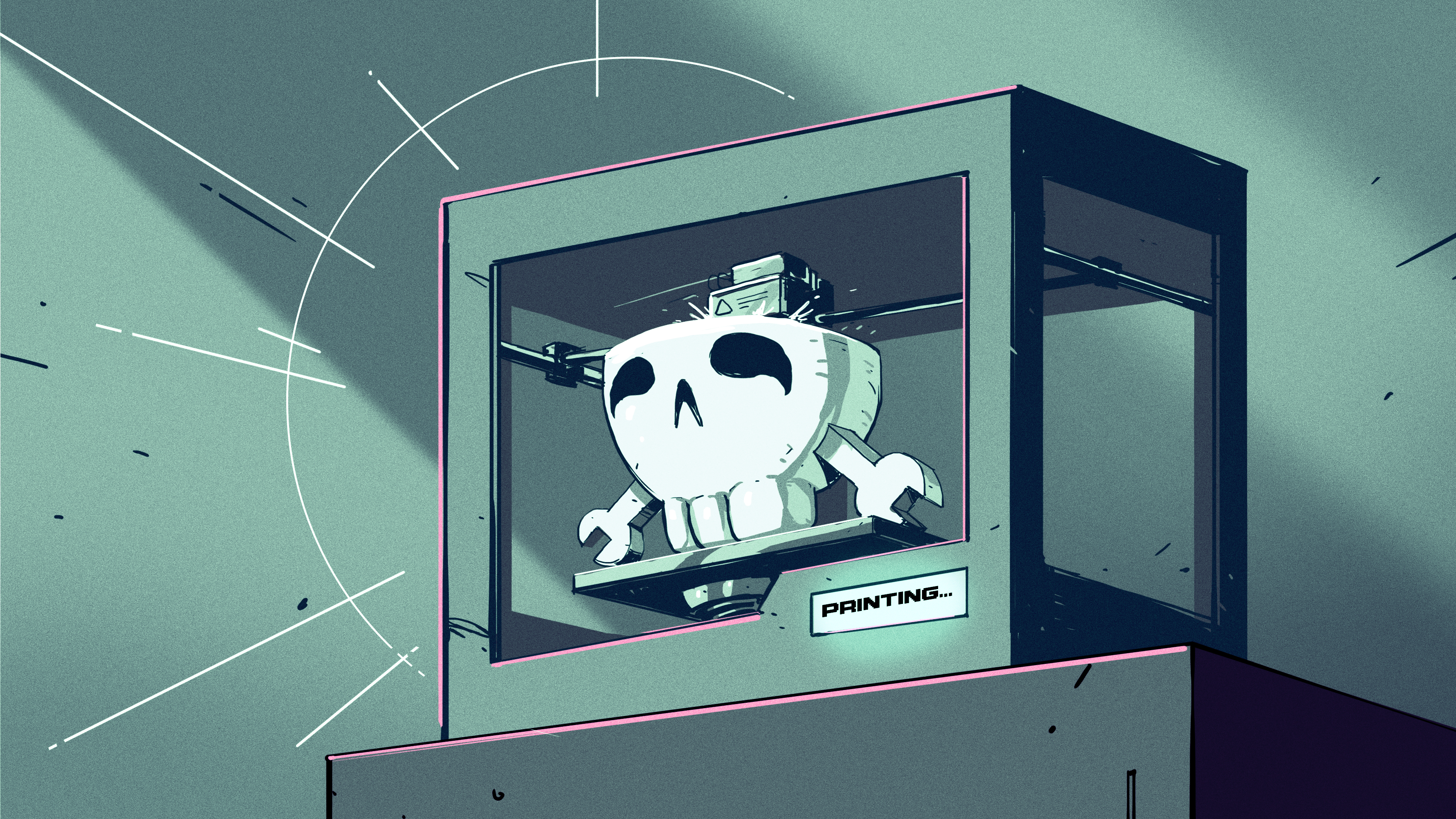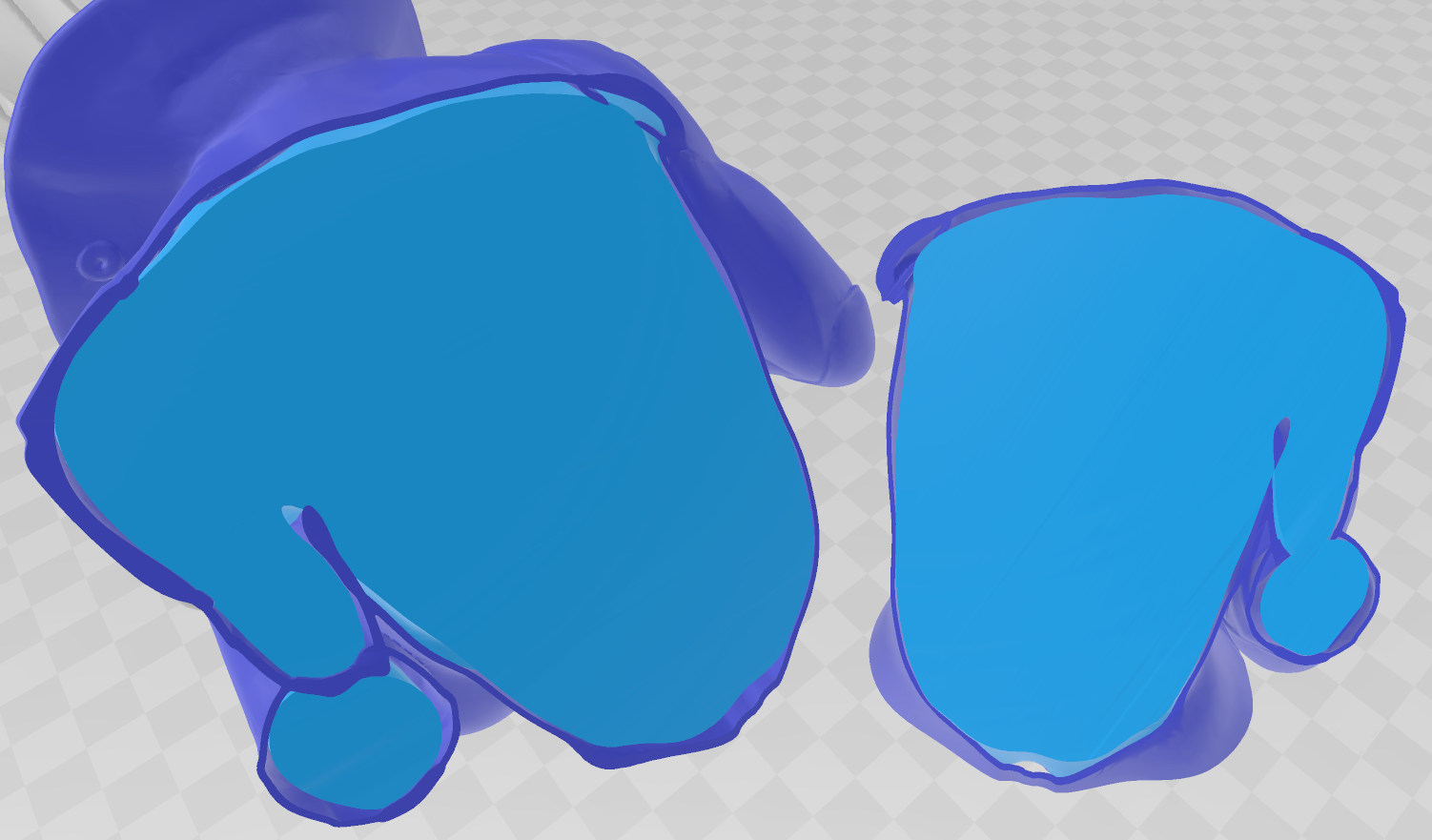
There are more 3D models available online than you might imagine. But what about the paid models? Putting a model somewhere and placing a “buy” button next to it is no longer a problem, but after I spent some time buying and printing various non-free 3D models, I began to see some obvious shortcomings of this system.
The specific challenges and solutions depend on how these models are sold, but one thing is clear: poorly designed 3D models are bad for both consumers and the future pay-per-download market.
Different ways of selling models
There are many ways to sell models online. Online shopping is great for digital models because they are not physical goods and serving a thousand customers is no different than serving ten. Technically, the user pays for a license to use the model, and its terms vary considerably depending on the creators and resellers.
Pay per model direct sales
Direct selling is like downloading 3D models, only before you receive the link, you see the cost. Sites like Cults3D and MyMiniFactory allow creators to price non-free models themselves. It is rather difficult to estimate the number of their sales, but the number of downloads for popular models is measured in hundreds or thousands.
Standing apart is the successful Hero Forge project , which allows users to create their own miniatures for board games using a web interface. Users can pay to download the STL file for the model they create, or buy a printed version. Hero Forge is a proprietary system, but very successful judging by their recent Kickstarter campaign .
Indirect Pay-Per-Access Sales
Indirect selling means customers pay for access rather than buying one at a time. Successful creators make models in niche areas, and people pay to access their creator's library of work.
The usual way to work with monthly subscribers and provide file access for 3D modelers is through Patreon . Board games are one common niche, and some of the most successful creators have thousands of subscribers.
Another way of indirect sales is crowdfunding. Money is collected to create a specific set of models, and sponsors get access to the resulting files. Again, there are all sorts of miniatures of heroes and territories for board games here.
Self Print Kits
With this approach, 3D models are sold as part of a larger product. The customer purchases the kit and prints the plastic parts for it himself, while the kit may include electronic components and other parts. As a result, a set can include fewer items, is easier to manufacture, cheaper to ship, and usually costs less than if the seller had to do everything himself.
Examples of such a business model are Bulwark Blaster (NERF compliant) and OpenScan (open source 3D scanner). In both cases, designs are based on 3D printed components and specific parts lists. The buyer usually purchases a license to use one copy of the product.
And what's the problem?
In an ideal world, 3D printers reliably print parts of any shape without problems with overhanging, bridging, distortion or support. You can buy a 3D model and get exactly what you expect. Unfortunately, we haven't gotten to that yet.
High-quality 3D models need to be developed specifically for 3D printing, especially when it comes to money - since with the current system all the risks lie with the buyers.
No test drives, no fitting rooms, no refunds
The world of non-free 3D models is like a clothing store without fitting rooms, or a car dealership without a test drive. “No refunds” is a common phrase for sales and services, but when combined with the inability to try a product before buying, the result can be disappointing if the quality of the model turns out to be poor.
Low-tech models
3D printers, like any tool, are good in some situations, not bad in others, and terrible in others. This means that models intended for 3D printing must be designed with the strengths and weaknesses of 3D printers in mind. The model developed in this way can be said to be made with high manufacturability .
If the model was developed without considering 3D printing, then it can create problems for the person trying to print it. The problem is that it is not always possible to identify models with which problems arise, only by their image. Here are two examples.

For this model, props and post-processing will be required regardless of print orientation
The first is a simple latch from a larger FDM (filament) part. The problem here is subtle: it was designed in such a way that it is almost impossible to print it without props, regardless of the print orientation. She also has other problems, but more on that later.
Add props, and we're faced with post-processing and poor surface finish where they were attached. If placed on the visible side, the detail will be ugly. If on invisible (where the loop is), they will hardly fit there.
These problems are solved in post-processing, but the point is not that - but that it would be better to avoid these problems even during the development of the part.

The model is cut in half, colors are added for contrast between the inner and outer layers. The model is not solid. The problem arises where there are gaps between the outer and inner layers.
Second example. This model has been touted as SLA (laser stereolithography) compliant. FDM and SLA printers have very different advantages , so it was interesting to see a model specifically designed for SLA.
But I was disappointed. The model was not solid. There are gaps between the outer layer of the model (the figure's clothes) and the inner layer (the body), since these layers were modeled separately - and so they left it.
In these gaps, uncured material accumulates, and the surrounding parts of the model are very thin, which directly attracts imperfections when printing. This layout of the model ensures that the outer layers - those visible from the outside - are most likely to suffer during printing. And these problems were not visible until the model was paid for.
These and other problems demonstrate poor manufacturability, which you will not notice in screenshots and renders, and, as I noted earlier, payment for downloads at the moment is a territory with no money back and dangers for buyers.
Why poor quality models are a big problem
The problem with bad models is this: By the time the model turns out to have problems (or it can't be made properly, or it is too wasteful to print), it turns out that the buyer has already invested in it much more than just the purchase price. A bad model only repels a person who wants to hit the Buy button.
Shifting all risk onto the buyer so that all his money and attempts are wasted - this should be the last thing on any platform seeking to grow.
Ways to improve the situation
There is a temptation to try to solve this money back problem with a file access control system, but then it will become suspiciously like DRM - and this is unlikely to be a suitable path into the future.
On the other hand, it is possible to increase confidence in the quality of models and purchases without changing too much on the current platforms. Here's what you can do for this.
Demonstrate the quality of models with photographs and documentation
Documentation and a photo of the printed results, rather than just rendering models on a computer, is an effective way to provide the buyer with additional information about the model. The documentation does not have to be extensive, but it should list design elements, assemblies or areas that require special control. An example is Christoph Laimer's model of a print vise. It's a free model, but its excellent documentation instills confidence in its quality.
Models requiring additional components must clearly list them in the description, along with specifications and sources. The latch model that I used as an example of poor manufacturability requires some kind of mysterious spring, without specifying the size and where it can be found. This is another problem that is revealed too late.
If the developer has not clearly demonstrated that he has successfully printed his own design, do not buy it.
Provide parts for a test drive
Kits and other prefab designers can give free access to some of the components, as if to say, "If you can print and assemble these models, you will succeed because the design principles of my product were the same." If customers cannot return purchases, then this approach will at least give them a semblance of a test drive.
Run automatic quality checks on models
Professional printing studios such as 3D Hubs analyze the loadable objects as part of the approval process and warn of features such as thin walls, small parts that can get lost, and potential problems with removing struts. Model listing and selling services could increase consumer confidence by conducting similar reviews of the models being sold and showing the results of such analyzes along with the model and price.
What was your experience with paid models?
Have you bought models online or are you selling your own? What was your experience and what would you change in this system?